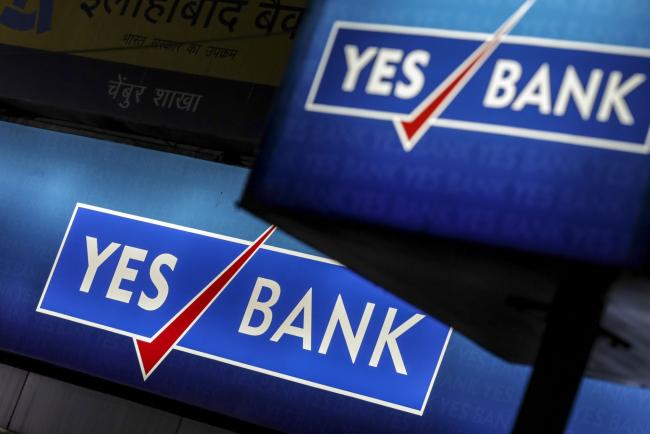(Bloomberg) -- Yes Bank Ltd. shares tumbled as much as 20% after the Indian lender’s profit missed estimates, bad-loan provisions swelled and capital buffers weakened.
While the Mumbai-based lender returned to profit in the three months ended June, its provisions for soured debts almost tripled from a year earlier, results showed late Wednesday. Yes Bank will need to issue fresh capital to give it room to boost revenue and profitability, Bloomberg Intelligence analyst Diksha Gera said.
The results “turned out to be far worse than what we had anticipated,” Jefferies analysts led by Nilanjan Karfa wrote in note, cutting their share price target for Yes Bank to 50 rupees from 80 rupees. “Capital infusion is of utmost urgency.”
Yes Bank is grappling with a crisis among shadow lenders because of its sizeable exposure to the cash-strapped industry. The issue has complicated new Chief Executive Officer Ravneet Gill’s efforts to clean up the balance sheet after the lender clashed with the Reserve Bank of India last year for not adequately disclosing problem loans.
The shares slid 11% at 9:28 a.m. in Mumbai, taking this year’s decline to 52%. The stock is the worst performer on India’s benchmark Sensex index this year.
What Bloomberg Intelligence Says
Yes Bank’s profitability could face pressure due to capital constraints hampering revenue growth, further aggravated by margin pressure and elevated provisions.
--Diksha Gera, bank analyst
Click here to read the research
Net income was 1.14 billion rupees ($16.6 million) in the three months ended June 30 compared with a loss of 15.07 billion rupees in the March quarter and profit of 12.6 billion rupees a year earlier, a filing showed late Wednesday. That missed the 1.48 billion rupee average analyst estimate.
Yes Bank set aside 17.8 billion rupees as provisions in the quarter. They included a one-time impact of 11 billion rupees for losses in investments due to rating downgrades at companies belonging to two financial services groups, the bank said, without identifying them. The provisions rose from 6.26 billion rupees a year earlier but were smaller than 36.6 billion rupees three months ago.
Other Key Figures
- Gross bad loans as a percentage of total lending widened to 5.01% from 3.22% in the previous quarter
- Capital adequacy ratio was at 15.7% from 17.3% a year earlier and 16.5% in the March quarter; core equity Tier 1 capital was 8% versus 8.4% three months earlier
The decline in the core capital ratio “is worrisome,” said Jaikishan Parmar, an analyst at Angel Broking. “It means that they won’t be able to grow if they cannot raise capital.”
